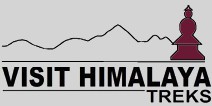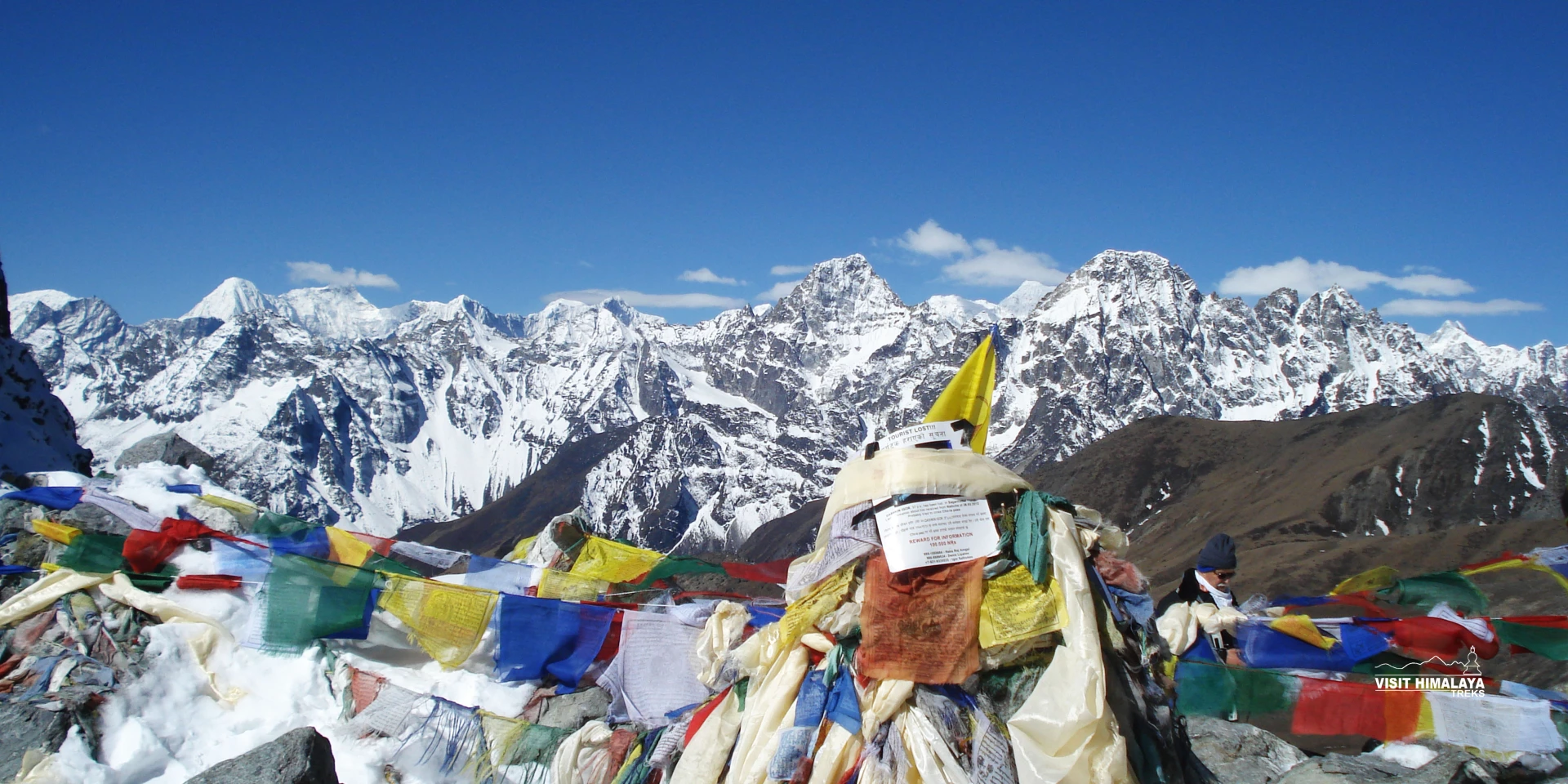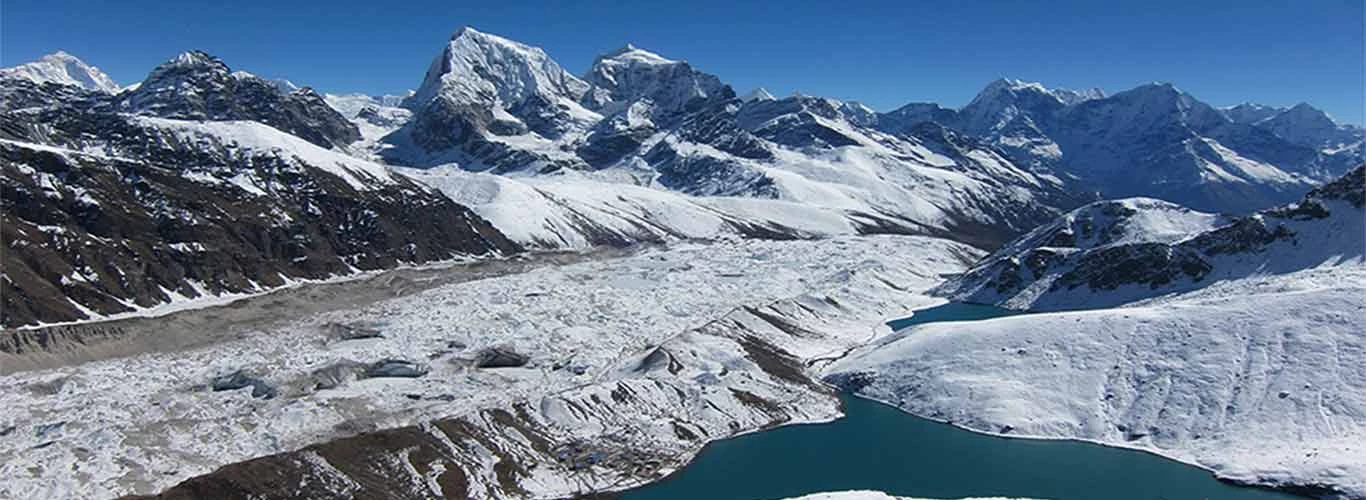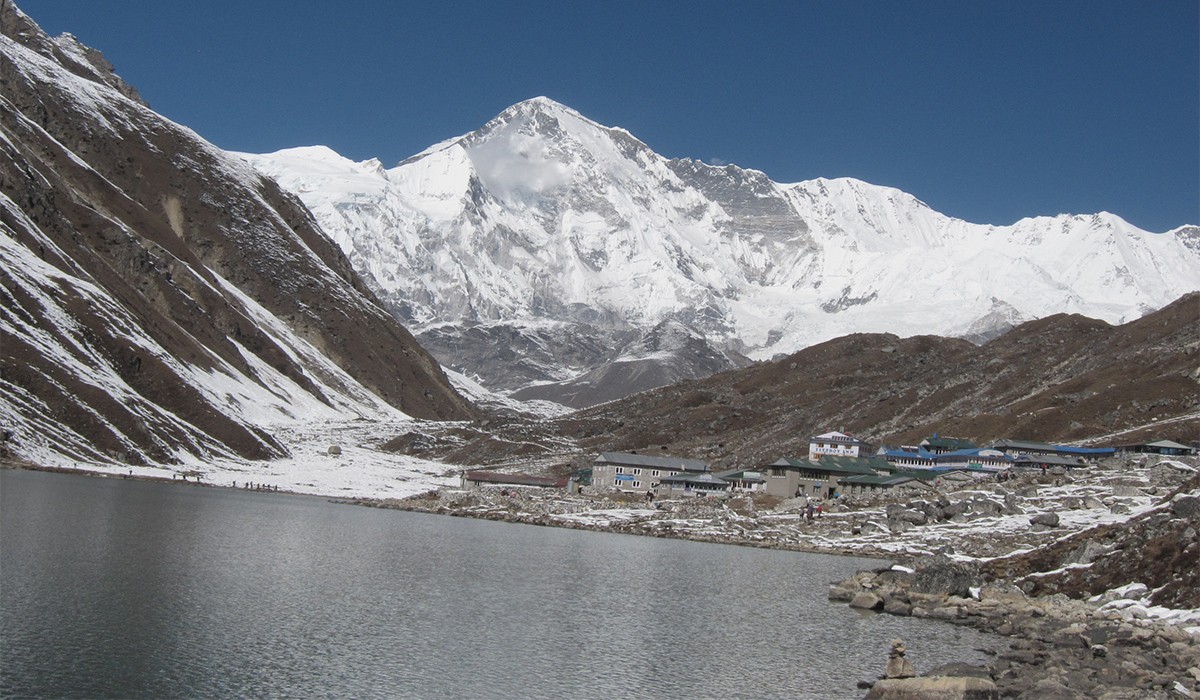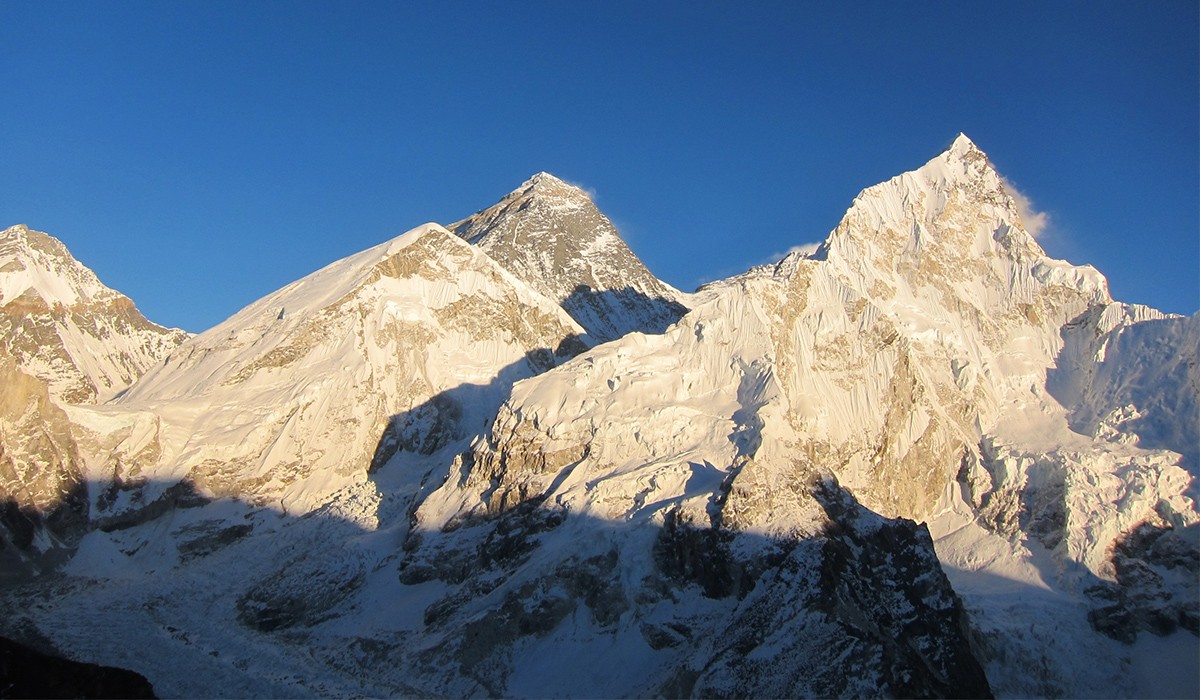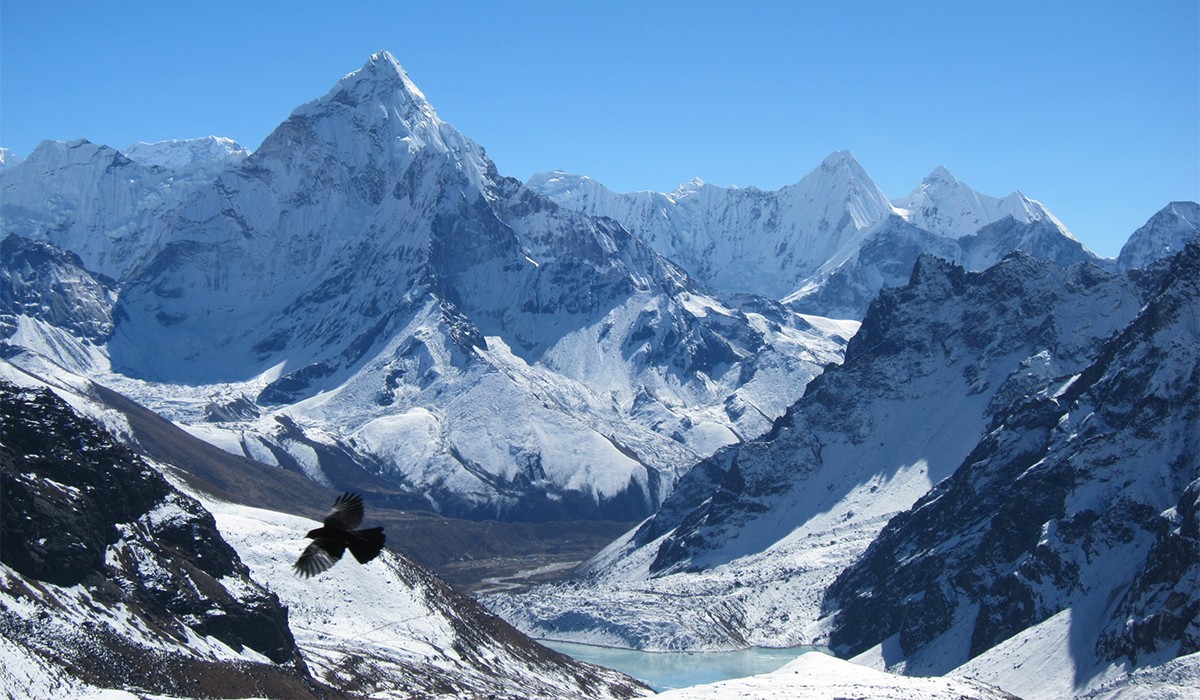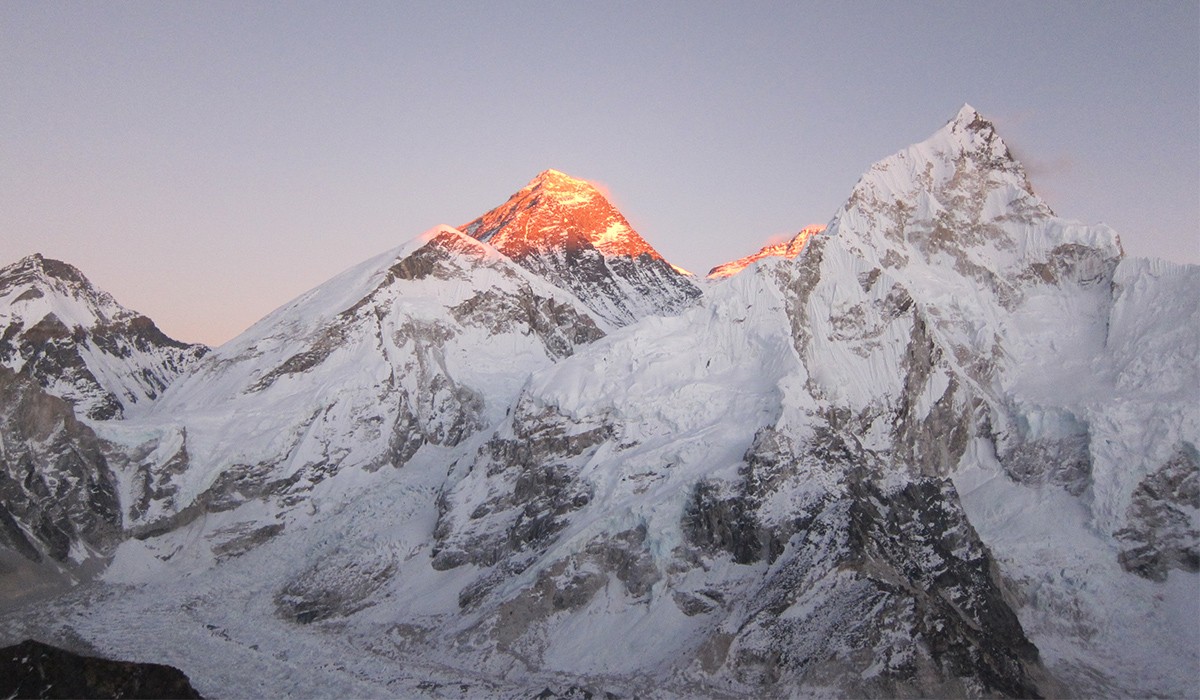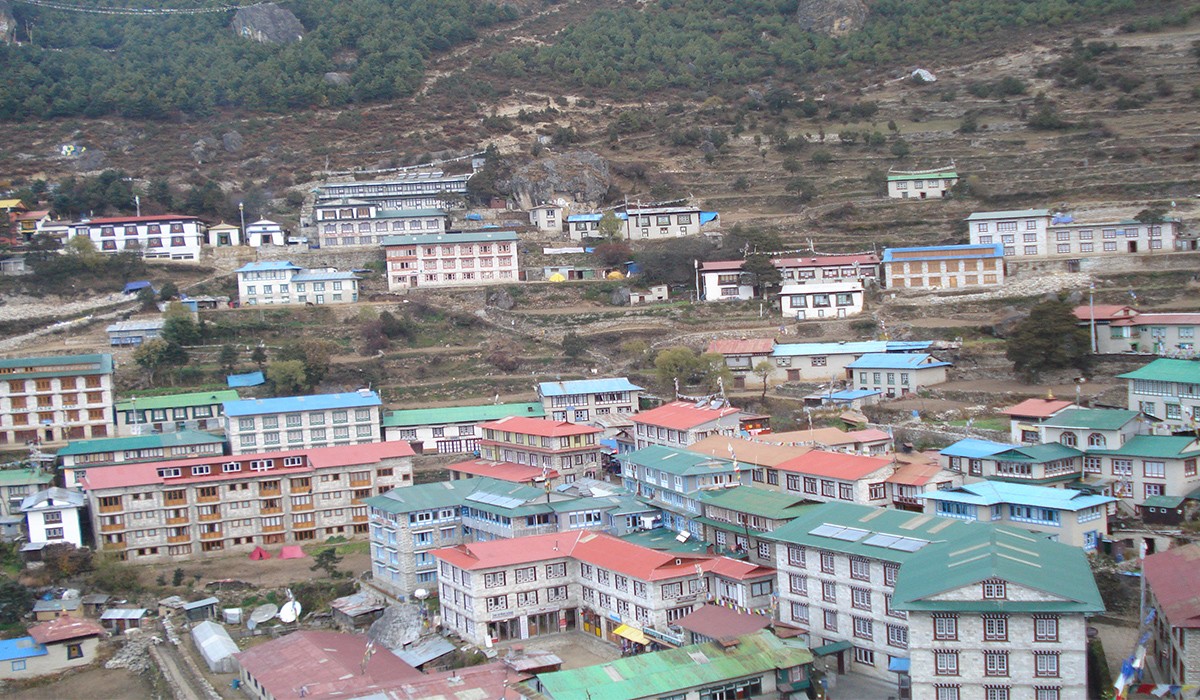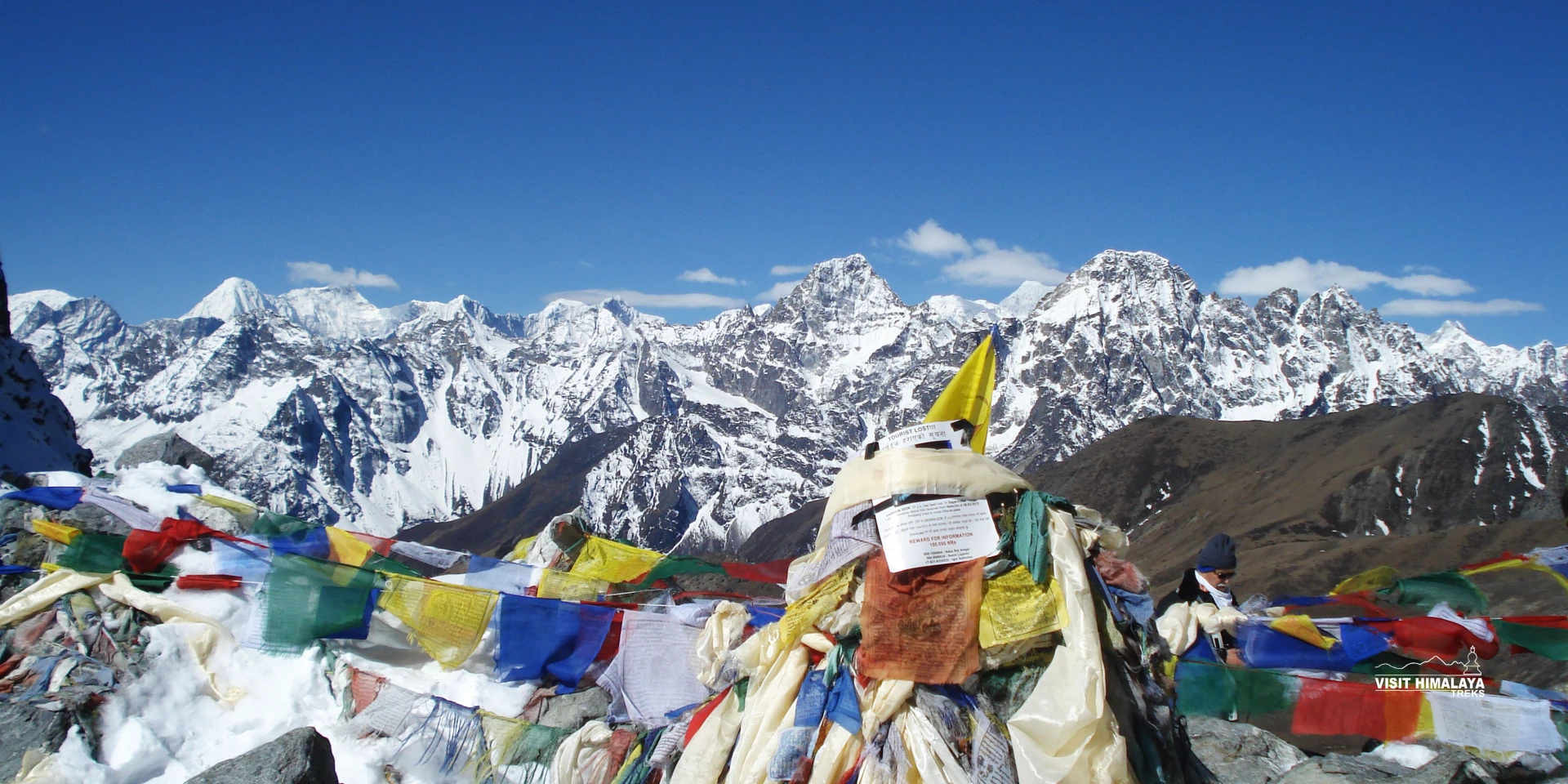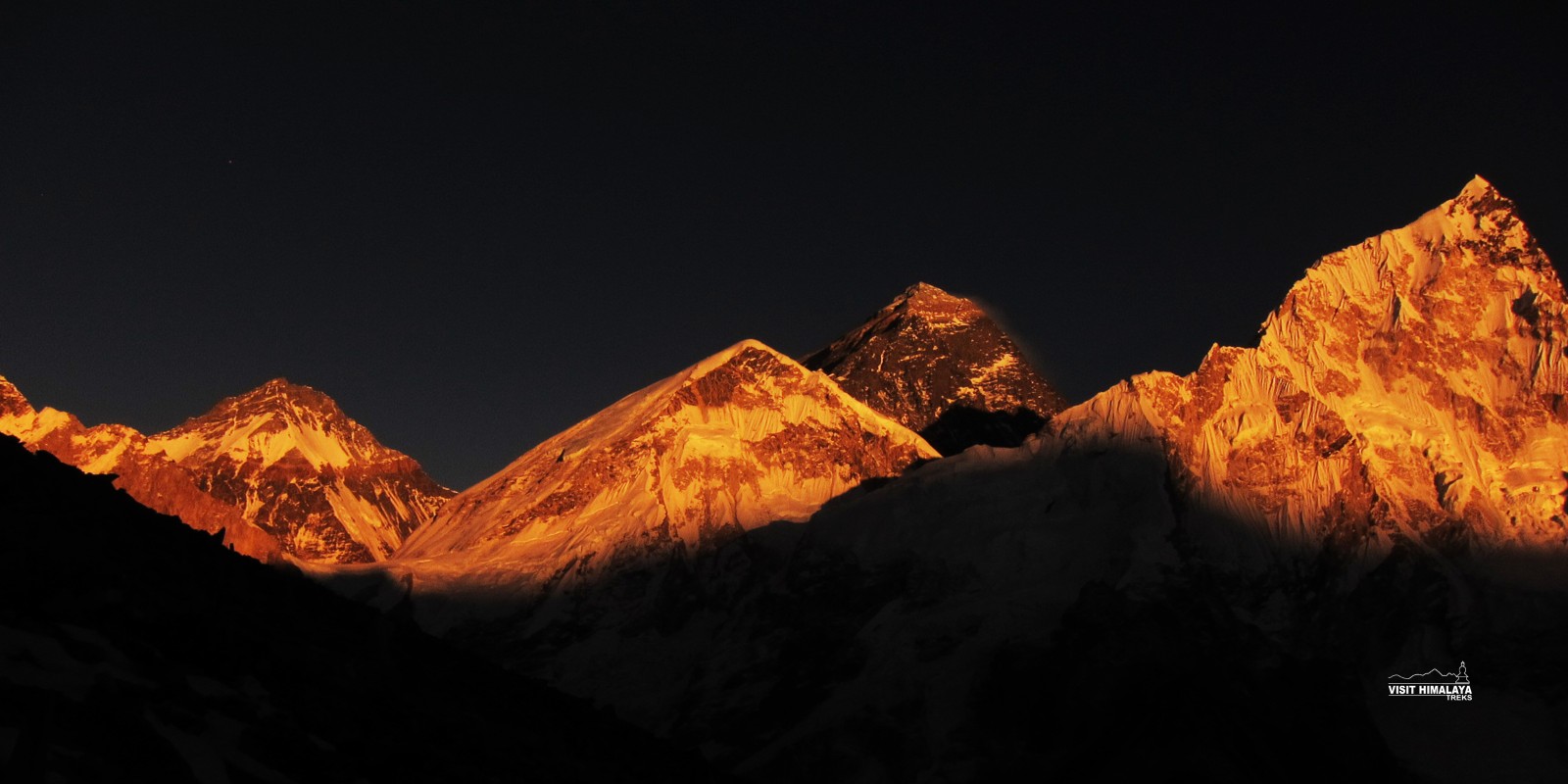Gokyo Lake Cho La Pass EBC Trek is a more adventurous trek to Everest Base Camp via Gokyo Lakes and a demanding Cho La Pass that avoids the regular busy route. The trek follows a different and quieter route compared to the regular Everest Base Camp Trek and explores most of the valleys higher up in Khumbu. Gokyo Lake Cho La Pass Trek also offers more stunning views and time to acclimatize for the altitude than the regular Everest Base Camp Trek.
The return route to Lukla follows the same route as of regular Everest Base Camp Trek, thus making sure that Gokyo Lake Cho La Pass Trek misses nothing from the regular Everest Base Camp Trek. It all begins with an exciting flight to Lukla and after a rest day at the famous Namche Bazaar, the trek enters the Gokyo valley. In the valley, a day is spent at Machermo (4440 meters) for acclimatization.
According to the legends, Machermo is the place where the mythical creature, Yeti was last seen. After acclimatization, the trail again heads onward to the valley and gets to the beautiful Gokyo lakes. A couple of hours of uphill hiking from the Gokyo Lake takes one to Gokyo-Ri (5360 meters), one of the best viewpoints in the whole Khumbu region. Gokyo-Ri offers marvelous panoramic views of Everest (8848 meters), Lhotse (8516 meters), Cho Oyu (8201 meters), and many more peaks from the Khumbu region.
Adding to the stunning scenery is the longest glacier in the country, the Ngozumpa Glacier, making the views from Gokyo-Ri an absolute beauty of nature for the eyes. From Gokyo, the route returns down to the valley and heads towards another valley to get to the bottom of Cho La Pass (5330 meters). One has to cross the Cho La Pass to get into the main valley to the Everest Base Camp.
The route follows to head towards the valley and joins the traditional trekking route to the Everest Base Camp at Lobuche (4900 meters). The return route to Lukla descends into the main valley through the major settlements of Pheriche (4200 meters), Pangboche (3900 meters), and Namche (3440 meters), ending Gokyo Lake Cho La Pass Trek at Lukla.
Lukla Flight Information.
Kathmandu Airport and the runways are shared by both domestic and international flights. Can be quite busy in the high tourism seasons, where Lukla flights will be in the peak time. To avoid the busy air traffic and landing on the runways can be a problem.
Completing the flights and making sure all travelers are in Lukla and Outing from Lukla on time. The Lukla Flight operates from Manthali (Ramechhap) Airport during the peak season. The months of October and November are in the autumn season and the months of March to May are in the Spring season Lukla flights operate from Manthali (Ramechhap Airport).
During this period (October and November in the autumn season and March to May in the Spring season) there is no flight available KTM – LUKLA and LUKLA – KTM.
During peak tourism season, October and November in the Autumn season and March to May in the Spring season Lukla flights operate only from Manthali (Ramechhap Airport).
Scenic Flight to Lukla Airport Full Information read here.
Gokyo Lakes Chola Pass EBC Trek Itinerary,
Day 01: Arrive in Kathmandu (1350 meters).
Day 02: Sightseeing and Trek Preparation.
Day 03: Fly to Lukla (2810 meters) and trek to Phakding (2610 meters).
Day 04: Trek to Namche Bazaar (3440 meters).
Day 05: Acclimatization day at Namche Bazaar.
Day 06: Trek to Dole (4200 meters).
Day 07: Trek to Machhermo (4440 meters).
Day 08: Acclimatization day at Machhermo.
Day 09: Trek to Gokyo (4790 meters).
Day 10: Acclimatization day at Gokyo.
Day 11: Climb Gokyo Ri (5360 meters) and trek to Dragnag (4700 meters).
Day 12: Cross Cho La (5330 meters) and trek to Dzong Lha (4830 meters).
Day 13: Trek to Lobuche (4910 meters).
Day 14: Trek to Gorakshep (5180 meters).
Day 15: Climb Kala Patter (5545 meters) and trek to Lobuche (4910 meters).
Day 16: Trek to Dingboche (4410 meters).
Day 17: Trek to Tengboche (3860 meters).
Day 18: Trek to Namche Bazaar (3440 meters).
Day 19: Trek to Lukla (2810 meters).
Day 20: Fly back to Kathmandu.
Day 21: Free day at Kathmandu
Day 22: Departure.
